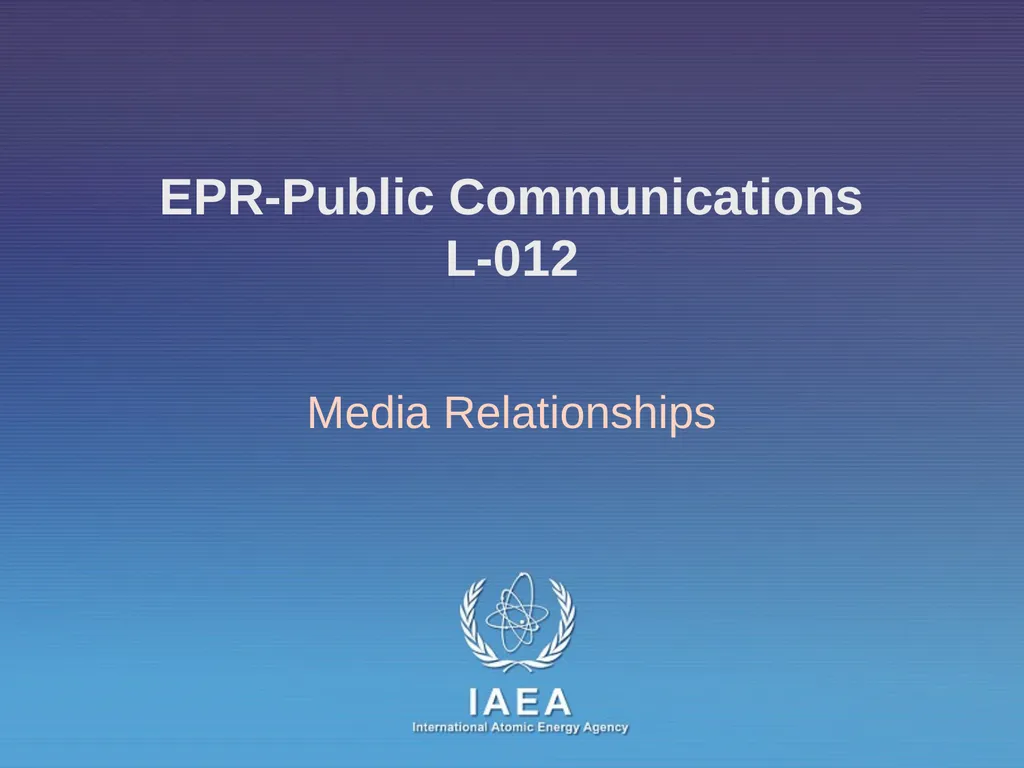
Media Relationships EPR-Public Communications
Author: pasty-toler | Published: 2025-05-29
Description: Media Relationships EPR-Public Communications L-012 Objective An overview of how various media work and how to identify key media; Establishing and maintaining working relationships with the media. Outline Overview; Key media for radiation
Download Presentation
Download the PPT/PDF: Download
Transcript:
Loading transcript…